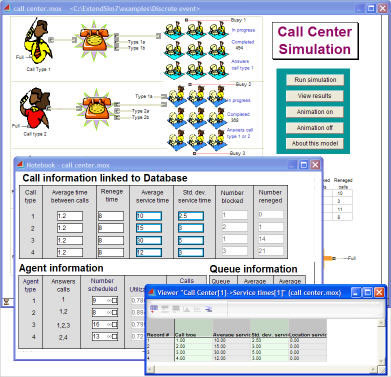


As more work is pushed into the system, the average flow time increases. The blue line shows the effect that an increased workload has on the average flow time. At 200 percent, the bottleneck resource has enough work in the system to keep it busy for 72 days. For example, at 100 percent, the bottleneck resource has enough work in the system to keep it busy for 36 days. The chart below shows the first set of results from the resource loading study.

We would only release new work into the system once the bottleneck resource was below a specified threshold. This backlog would generally not be completely present in the immediate queue of work at that resource. In our system, we monitored the backlog of work for the resources. We applied a slightly different mechanism, but it had a similar effect as CONWIP or CONPIP. In the project-management environment, the term is CONPIP or Constant Projects in Process. In manufacturing, you might refer to it as CONWIP or Constant Work in Process. This is basically controlling the amount of work in the system, and there are several approaches to implement this. Identify the appropriate level of reserve resources Determine how resources should be loadedĢ. Our study outlined several steps to dramatically improve the performance of these organizations and I want to talk about two of them here.ġ. Even a small delay in a task far away from a key resource can cause chaos in the complicated and interrelated schedules that exist in a project environment, and attempts to tightly schedule projects are soon abandoned. And when many different resources are used multiple times in a single project and frequently shared between projects, any unexpected delay in a single task can cause significant ripple effects delaying one or more projects. Even the best-planned schedules become difficult to execute in this environment. However, in the project world, demand is highly uncertain, workflow is quite unpredictable, and task durations have significant variability. In an ideal setting, work schedules can be developed in advance, so that resources have just the right amount of work allocated to them at various points in time. And while there is pressure to keep resources busy, overloading them usually results in unfavorable outcomes like projects taking too long. There is no question that putting too little work into the system will tend to starve key resources. It is very difficult to correctly determine the appropriate workload that should be placed upon resources in this environment. The primary output we studied was the project flow time, or the time it takes a project to complete the system. The projects we modeled used several common resources. We modeled a variety of project structures. This multi-project system (think of the projects as engineering projects) required various resources at different stages. We modeled a multi-project system, but the results we found can be applied to any system. It might change the way you look at bottlenecks in a resource-constrained system as well. It made me start thinking differently about variation and its effect on systems. Students may obtain ExtendSim 8 LT from Imagine That, Inc.I worked on a simulation study last year with Dr. ExtendSim 8 LT is not included in this book. Each chapter contains practical exercises and problems at the end of the chapters. I have built all the models contained in this book with ExtendSim 8 LT, which limits the number of modeling blocks, but otherwise has the required ExtendSim 8 capabilities. Most of the text is devoted to building models with ExtendSim 8, starting with a simple single-server queue and culminating with a transportation depot for package transfer and delivery.
EXTENDSIM 8 HOW TO
This book is intended to be a blend of theory and application, presenting just enough theory to understand how to build a model, designs a simulation experiment, and analyze the results. The book can be used as either a desk reference or as a textbook for a course in discrete event simulation. This text presents the basic concepts of discrete event simulation using ExtendSim 8.


 0 kommentar(er)
0 kommentar(er)
